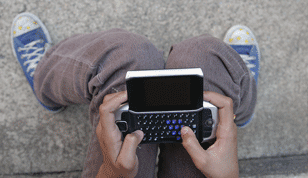Blog Categories
Search Blog
Blog Categories
Ouch, My Thumb Hurts!
Understanding De Quervain’s Tenosynovitis
Does your child complain of a sore thumb? Does he play video games, text a lot, or use a smartphone? If so, your child may have a painful condition that affects the tendons of the thumb called De Quervain’s tenosynovitis.
What is De Quervain’s Tenosynovitis?
De Quervain’s tenosynovitis is an inflammatory condition involving two tendons of the thumb. These tendons (connective tissues) are involved in pulling the thumb out and up – precisely the movements required for typing on a smartphone. I must admit that 15 years ago, this was a condition that I rarely saw in my physiotherapy practice. However, with the advent of technology, particularly texting, De Quervain’s tenosynovitis has become quite common in children, teens, and adults.
Symptoms
De Quervain’s tenosynovitis is characterized by pain near the base of the thumb, and is particularly apparent when moving the wrist. Your child may complain of pain when lifting objects, making a fist, pinching and/or during writing tasks. Some swelling may be evident in the area. Avoiding using the hand is often a first sign that something is potentially wrong.
Causes
The most common cause of De Quervain’s tenosynovitis is overuse. The thumb tendons that would normally glide in a sheath (imagine a string being pulled through a straw) get ‘sticky’. This causes pain when attempting to use the thumb. Over time, scar tissue can form within the sheath, resulting in significant loss of function and increased pain.
Treatment
First and foremost, rest your thumb! As hard as this might be, encourage your child to take frequent breaks from their favourite technology. General movement and stretching of the fingers and hand may also help. Ice can be applied to the affected area to minimize the symptoms.
If pain, stiffness and functional limitations persist, you should consider physiotherapy treatment. Physiotherapists can help with manual mobilizations (movements) to assist the glide of the tendon within the sheath. Equipment such as ultrasound, or interferential therapy, may be used to facilitate healing. Physiotherapists will also teach your child how to stretch his/her thumb tendons appropriately and safely. In severe or persistent cases, a brace may be recommended.
So give your thumbs a break from technology and feel better!






